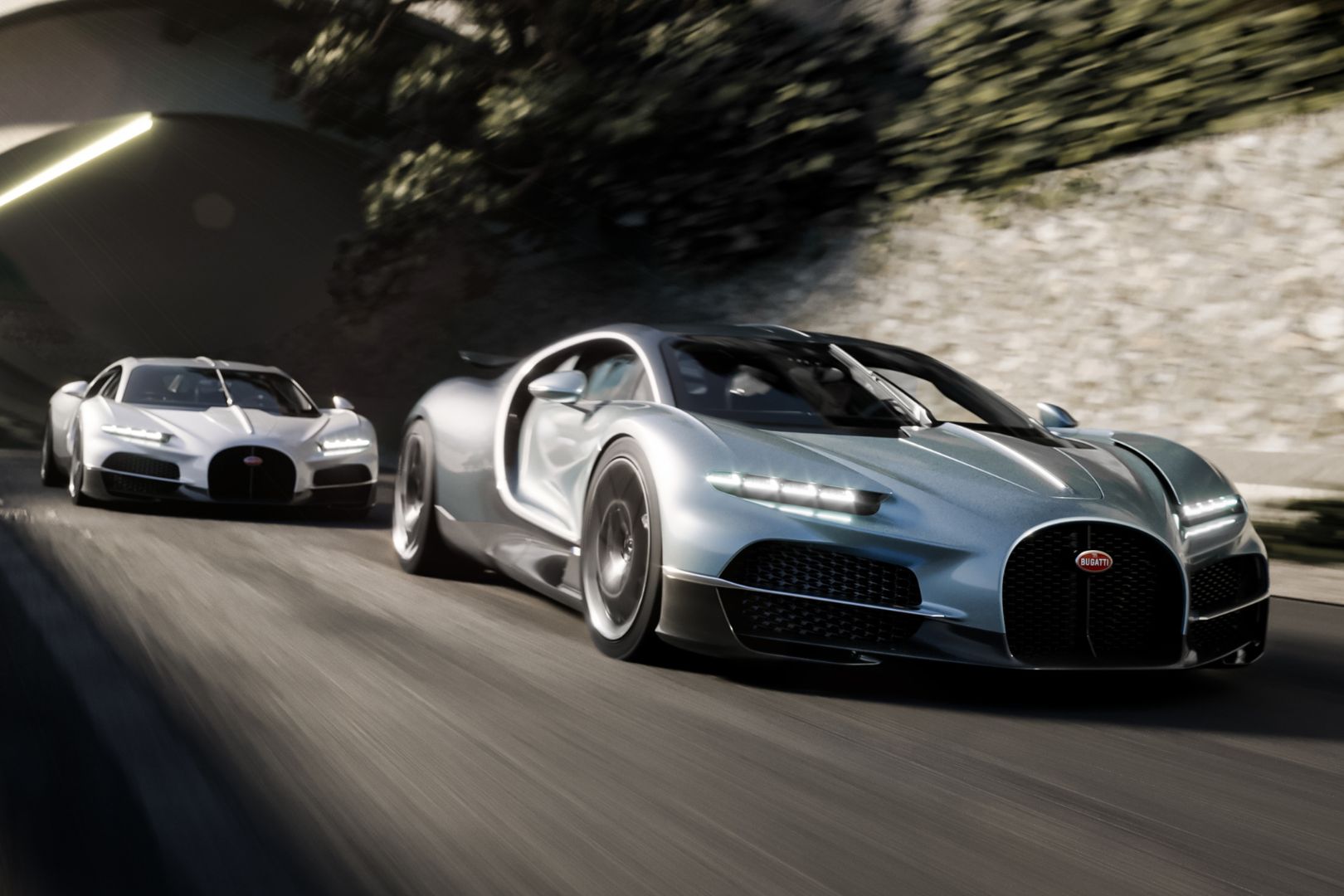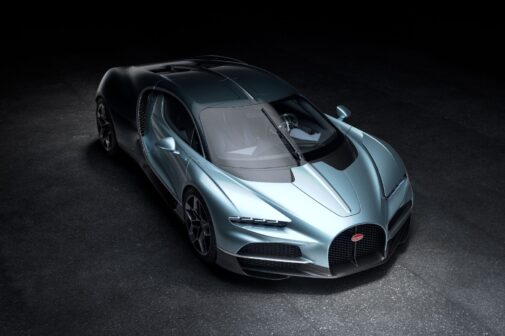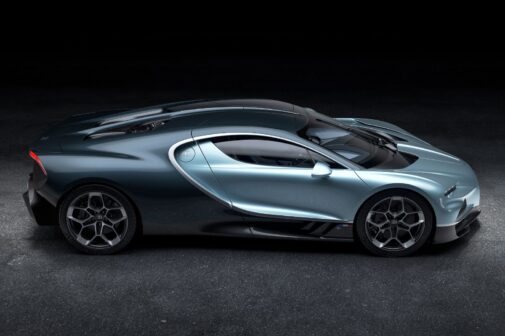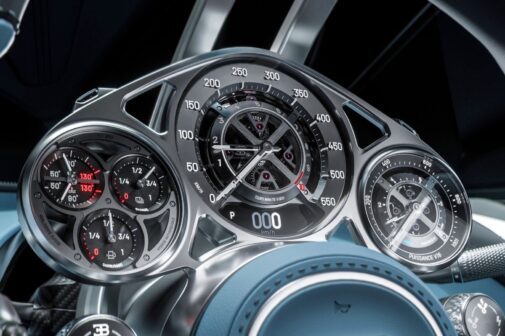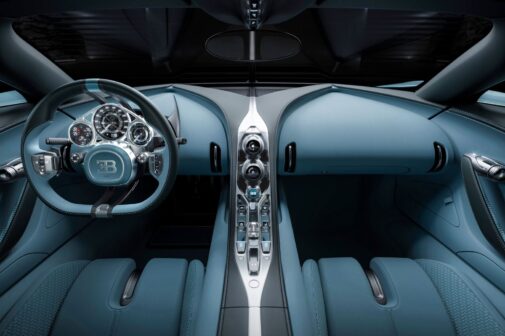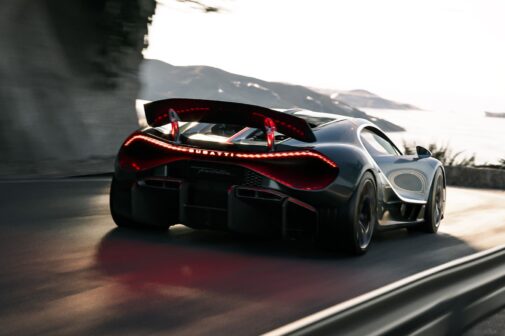After what seemed like an eternity of making us wait during the livestream, Bugatti has finally taken covers off its latest creation; the Tourbillon, which takes the mantle from the Chiron. However…
…yes, Mate Rimac calls it an ‘evolution’ in terms of design, but he also assured us nothing has been carried over from the Chiron (or a Rimac). There is that familiar slihouette that will make it recognizable as a Bugatti, as The horseshoe grille is larger than before, and there are two rather large air intakes on either side.
Wait wait, what’s that line in the middle? That is Bugatti’s tribute to the Type 57 SC Atlantic, which was riveted in the centre by a special magnesium alloy, since it could not be welded back in the old days. The line begins from the horseshoe grille and flows all the way to the rear. Bugatti says the Tourbillon is also 38 mm shorter than the Chiron, and while Bugatti says the Tourbillon is lighter, it didn’t specify by how much, and that it ‘could go up or down’, since there are still some things being worked upon.
Interestingly, the Tourbillon features a new underbody diffuser integrated into the structure, beginning from just behind the passenger cabin and it rises at a certain angle. This integration allows for the rear to be ‘exposed’, and the active rear wing works as an airbrake for improved stability during deceleration.
To the meatier bits now; while downsizing has been on the minds of almost every other manufacturer, Bugatti decided to shake things up and give the Tourbillon an 8.3-litre nat-asp V16. This is the first time Bugatti has deployed a naturally-aspirated unit, and accompanying this rather staggering powertrain are three electric motors; two of which are placed at the front, while one is at the rear. The 25 kWh battery pack rounds up the hybrid system.
With numbers of 1775 bhp and 91.77 kgm of torque, the Tourbillon sprints to 300 kph in a matter of 10 seconds, reaching an electronically-restricted top speed of 380 kph. However, the Speed Key will help you break that barrier and reach to a maximum of 445 kph. Faster than a young Eminem spitting verses in ‘Rap God’? That shouldn’t even be a question.
And for those of you who seek to ‘protect the environment’ even in this category, the Bugatti Tourbillon can cover 60 km in all-electric mode.
If you’re someone like me, you will appreciate that Bugatti chose the best way for a digital detox of the interiors. The instrument cluster is an analogue unit, and the steering unit itself is rather unique; a fixed-hub steering, where the cluster stays still, while the rim of the steering wheel rotates. The instrument cluster mimics the look and feel of an exquisite, high-quality watch, housed in sapphire glass. The centre console, too, Bugatti says, is inspired by the art of watchmaking, featuring aluminium switches and rotary dials, but hidden above is a digital screen after all, showing all the vital statistics and feed for the reverse parking camera.
Other interesting details include the fact that the pedals are power-adjustable and can be moved back and forth, while the crystal lever in the centre console mimics the feel of cars from the days of our ancestors, with a pull to start and a push to stop the engine from running. Bugatti also says the seats are fixed to the floor, and that the audio system is being developed without the use of conventional speakers and woofers. Instead, the Bugatti Tourbillon will feature ‘exciters on the door panels and throughout the car to use existing interior panels as speakers.’ Now that’s something we’re highly curious to hear more about.
The Bugatti Tourbillon isn’t entering production until 2026, and only 250 of the luckiest people on earth will get to drive one home. In case you want to be among those, you better start saving up and do something about that SIP, because at Rs 34 crore (without import taxes and customs), it’s not going to be cheap.





